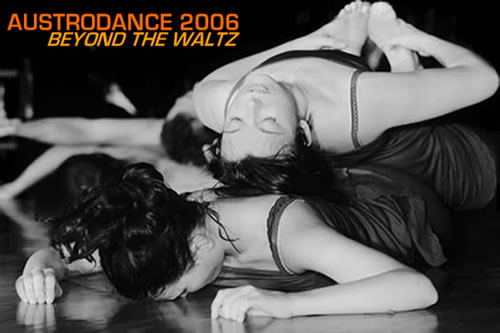Spotlight on Dance
From October 31 to November 8, 2006 , the Austrian Cultural Forum in Washington, D.C. set the stage for a dance extravaganza - The Austrodance Festival 2006 - Beyond the Waltz.
Austrian dance is usually associated with more traditional ballroom dancing, and, of course, the Waltz, Austria’s quintessential element of terpsichorean heritage. The dance festival Beyond the Waltz aims to broaden these horizons by introducing Austrian modern dance to the American public. “The festival is the first in-depth look in America at Austrian choreography and dancing; it has been thirty years since the last major dance company performed in Washington, D.C.,” explains Margareta Ploder, Director of the Cultural Forum. “Vienna is one of the world’s most active cities for dance today with its festivals, international workshops, and an abundance of home-grown talent. We decided that it was time to do something about this lack of Austrian representation on the Washington dance scene.” The emphasis of Beyond the Waltz is on the contemporary, but the works of five current Austrian choreographers are shown in the context of Austria’s dance history.

Photo: Laurent Ziegler
Austrian Information spoke with Mr. George Jackson, a Washington, D.C. based dance journalist and co-organizer of Beyond the Waltz:
AI: Mr. Jackson, audiences everywhere now often face the same questions about dance. In particular, one might wonder if Austrian and American audiences approach dance differently. How do you explain potential differences in the light of this upcoming festival?
Europeans and Americans tend to answer these questions differently. The Europeans respect tradition less. If dance and dancers were something special, something extraordinary yesterday, they now ought to look as commonplace as possible. Contemporary life often hasn’t a rhythm or form, so why should contemporary dance? Nothing in life is pure, so why not allow choreographers to avail themselves of speech, symbol, projection and anything else that is non-dance? Perhaps there will be a mind change the day after tomorrow, but at this instant it seems a waste of time to meet the old expectations over and over again. Why shouldn’t dancemakers and performers be contemporary and live for the moment?
Because, - reply more rather than fewer American dance fans,- there’s the danger of losing hard won skill and craft. It takes time to establish a tradition, but disrupting it forever takes no time at all. It isn’t in life but only in art that we can go time traveling and hold conversations with the past. Arriving at a satisfactory future may depend on that.
Beyond the Waltz will not settle these arguments but it may help to refine them. The five contemporary Austrian choreographers participating in these programs do not totally reject tradition. All of them are using work by a colleague from the past as a springboard. The two participating American choreographers are aware of tradition but not anchored by it, responding to their heritages with fresh impulse.
The fault why so little Austrian dance has come to America since the 1970s probably lies with both parties. When Americans think of dance in Vienna their mind’s eye sees white stallions and their mind’s ear feels the pulse of three-quarter time. The Lipizzaner of the Spanish Riding School and the New Year waltz concerts have been popular Austrian exports for decades and they are unique. Ballet and modern dance have been given less attention in Vienna and for a long time were only marginally noteworthy. That may be changing now and Beyond the Waltz is a sort of test.
Beyond the Waltz took placefrom October 31 until November 8, 2006 with presentations at the Embassy of Austria, the Greenberg Theatre at American University and the Kennedy Center’s Millennium Stage.
For detailed information about the festival, please visit www.acfdc.org/dance
